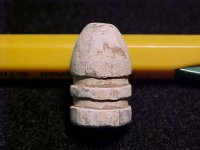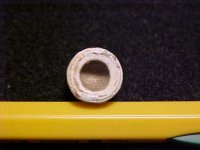Wldbil
Bronze Member
Got to hunt a well known camp site this past weekend and found a few .69 caliber balls, a chewed .69 and some buck balls. The tooth was just laying out in the field, so I grabbed it for my son, he loves it. Some kind of canine I believe. Does anyone know what the more modern 2 ring bullet is? Thanks for looking and hope everyone gets out soon!!!
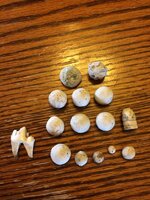
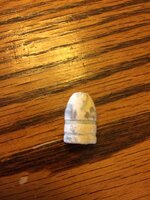
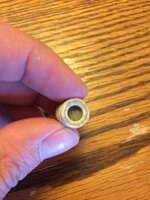



Upvote
2


